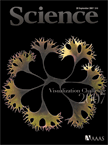 Authors: Morrison HG, McArthur AG, Gillin FD, Aley SB, Adam RD, Olsen GJ, Best AA, Cande WZ, Chen F, Cipriano MJ, Davids BJ, Dawson SC, Elmendorf HG, Hehl AB, Holder ME, Huse SM, Kim UU, Lasek-Nesselquist E, Manning G, Nigam A, Nixon JE, Palm D, Passamaneck NE, Prabhu A, Reich CI, Reiner DS, Samuelson J, Svard SG, Sogin ML
Authors: Morrison HG, McArthur AG, Gillin FD, Aley SB, Adam RD, Olsen GJ, Best AA, Cande WZ, Chen F, Cipriano MJ, Davids BJ, Dawson SC, Elmendorf HG, Hehl AB, Holder ME, Huse SM, Kim UU, Lasek-Nesselquist E, Manning G, Nigam A, Nixon JE, Palm D, Passamaneck NE, Prabhu A, Reich CI, Reiner DS, Samuelson J, Svard SG, Sogin ML
Science. 2007 Sep 28;317(5846):1921-6.
The genome of the eukaryotic protist Giardia lamblia, an important
human intestinal parasite, is compact in structure and content,
contains few introns or mitochondrial relics, and has simplified
machinery for DNA replication, transcription, RNA processing, and
most metabolic pathways. Protein kinases comprise the single largest
protein class and reflect Giardia‘s requirement for a complex signal
transduction network for coordinating differentiation. Lateral gene
transfer from bacterial and archaeal donors has shaped Giardia‘s
genome, and previously unknown gene families, for example, cysteine-
rich structural proteins, have been discovered. Unexpectedly, the
genome shows little evidence of heterozygosity, supporting recent
speculations that this organism is sexual. This genome sequence will
not only be valuable for investigating the evolution of eukaryotes,
but will also be applied to the search for new therapeutics for this
parasite.

